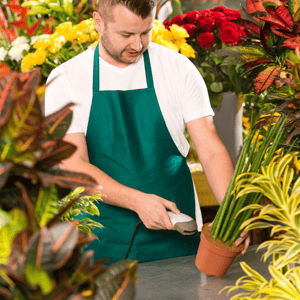
Barcoding Guide for Production Nurseries
The development of this guide has come out of a working group from industry including growers, retailers across Australia, NGI representatives and GS1 facilitators. This group came together to drive a standard for industry in barcoding as there was no representative standard and growers were being asked to do different things for different retailers and then not being consistent.
One thing that has changed in the industry is that there is now a faster rate of technology adoption. In the retail space in particular most retailers now have barcode scanners and can track barcodes in their database.
Having this level of data can help better business decisions and also improve productivity in plant identification, stocktaking and planning. Even if you are a grower not supplying to retailers then it is still beneficial to be able to use in your nursery to assist staff in order picking, stocktaking, identification and ultimately as most people have smartphones there are apps available that can scan barcodes to help find you as a supplier.
This document was based on the brief of delivering a guide to the industry to help them. Within it, are some key points that readers should be aware of:
- It’s a guide, and to aid you getting started
- It mentions to seek clarification from respective trading partner(s) before starting.
- It highlights training should be done as it is a process that needs to be well understood.
- It stipulates that samples should be sent to GS1 pre-production for barcode testing.
- It links to other detailed resources to help people along the way.
Whilst this document doesn’t have technical information contained within, there is plenty available on the GS1 website, those that read this need to work through the steps and educate themselves in order to get the benefits from barcoding, but just as importantly, meet the needs of their trading partners.
Your Industry urges you to embrace this standard as it ultimately means that just like in all other industries we will have a common method of identifying plants and who is the grower, which for our industry is also an important step in better biosecurity controls.
